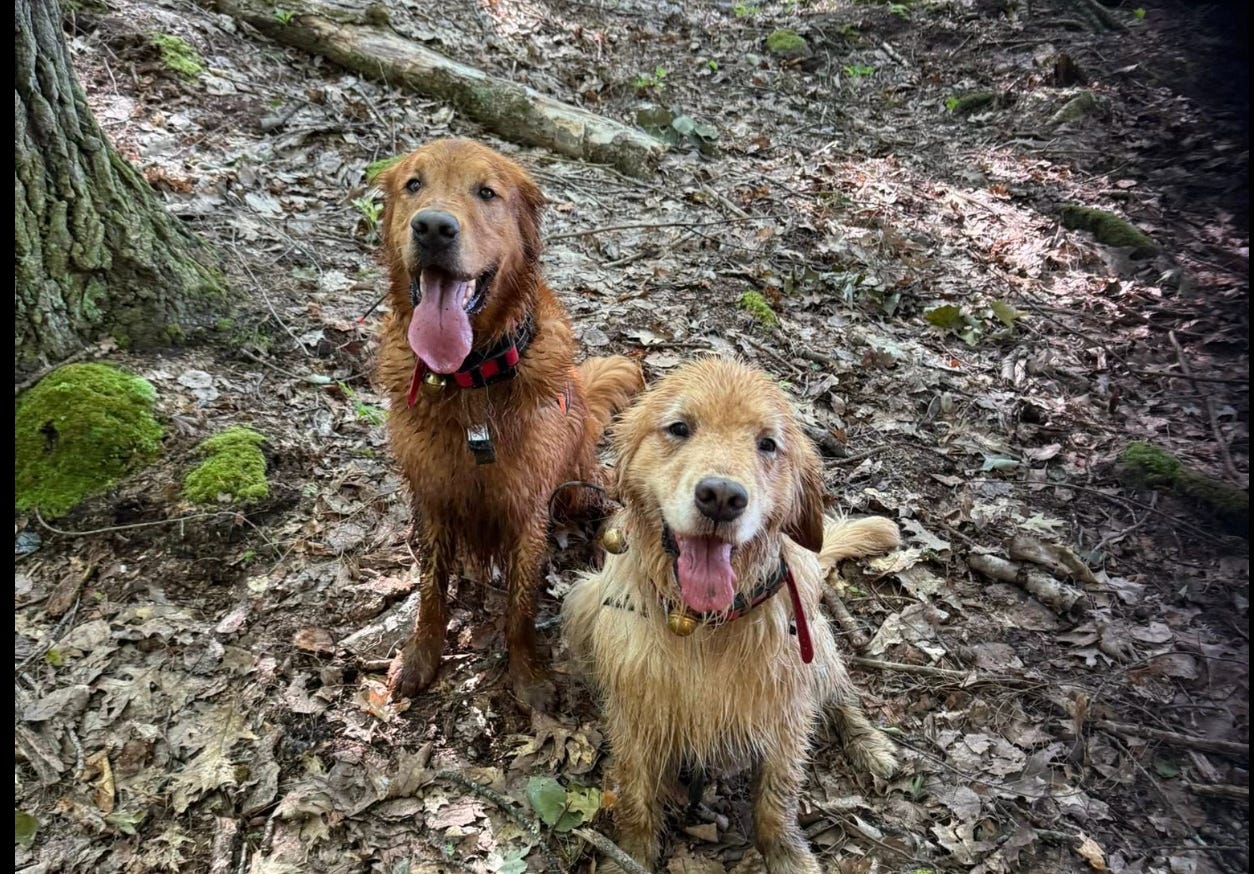Rescue Dogs Get Hot in the Summer - Here's How Their Handlers Handle It
Courtesy of North Country Search Dogs
When searching, we are very focused on finding our subject but we always have to prioritize our dogs’ safety. In rising summer temperatures, this means being vigilant about the risk of heat injuries. Just like in humans, there are varying stages of canine heat injury.
Heat stress is when a dog overheats but still has the ability to recover. The most important step we take with regard to heat stress is prevention – we’ll time our searching to avoid the midday temperatures, often opting to search at night on hot days.
We try to include access to water in each of our search areas and we carry lots of water and encourage frequent rest and hydration breaks. We monitor our dogs’ tongues for telltale signs of heat stress: a tongue that is hanging well out of the mouth, is cranberry red or ‘spatulated’ – flared and curling up at the tip. If we see evidence of heat stress, we take it seriously.
We remove them from the heat – ideally giving them a swim or encouraging then to lie down in a puddle or a stream. In the absence of a water source we’ll wet their paw pads and fur with the water that we carry. We seek out shade and cool ground to rest. We know not to give ice water – this is counter-productive as it constricts blood vessels in their tongue, thwarting their primary cooling mechanism.
The dangerous slide into heat exhaustion and heat stroke comes when the dog is no longer able to regulate their elevated temperature. This is a serious medical emergency requiring urgent veterinary attention. Heat Stroke can cause organ damage and death so the importance of those preventative measures can’t be overstated.
For us handlers, just like pet owners, being a good partner to our dogs requires vigilance and advocacy. We need to be flexible to accommodate our dogs’ needs. We owe this to our hardworking canine partners.


